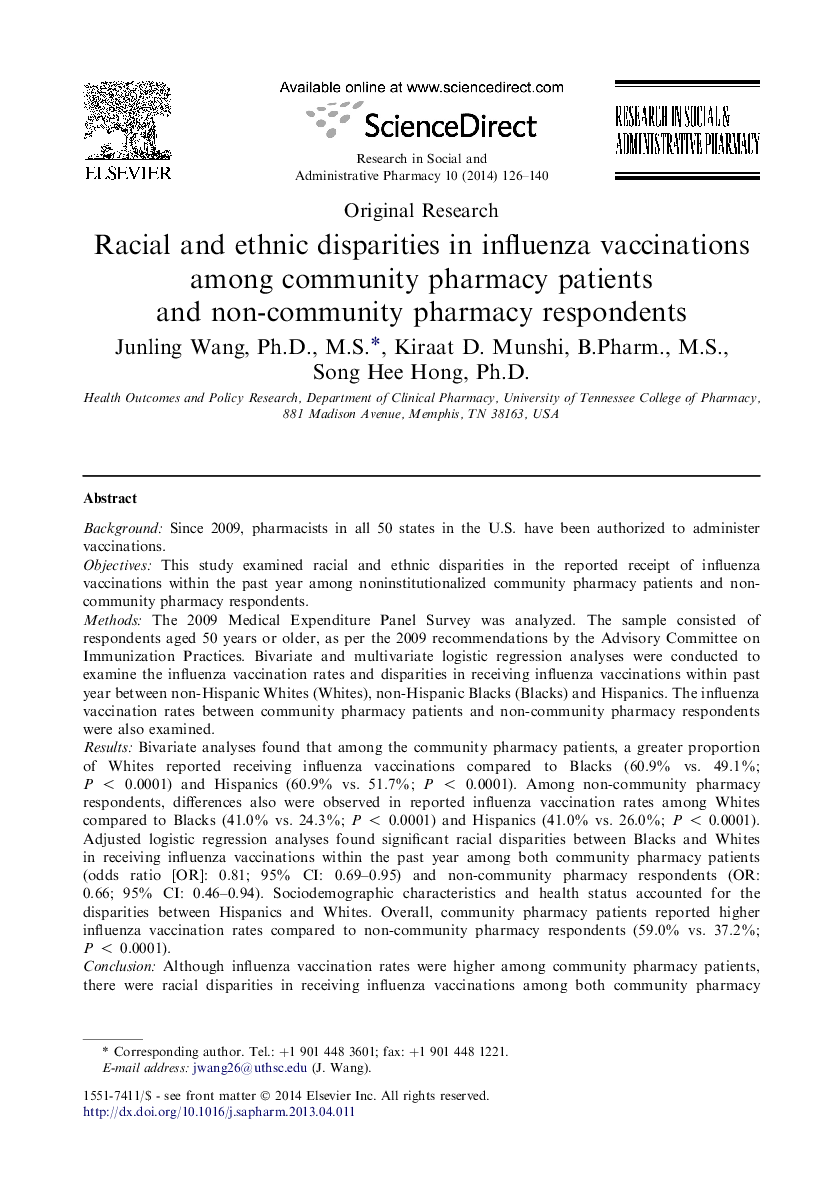| Article ID | Journal | Published Year | Pages | File Type |
|---|---|---|---|---|
| 2508711 | Research in Social and Administrative Pharmacy | 2014 | 15 Pages |
BackgroundSince 2009, pharmacists in all 50 states in the U.S. have been authorized to administer vaccinations.ObjectivesThis study examined racial and ethnic disparities in the reported receipt of influenza vaccinations within the past year among noninstitutionalized community pharmacy patients and non-community pharmacy respondents.MethodsThe 2009 Medical Expenditure Panel Survey was analyzed. The sample consisted of respondents aged 50 years or older, as per the 2009 recommendations by the Advisory Committee on Immunization Practices. Bivariate and multivariate logistic regression analyses were conducted to examine the influenza vaccination rates and disparities in receiving influenza vaccinations within past year between non-Hispanic Whites (Whites), non-Hispanic Blacks (Blacks) and Hispanics. The influenza vaccination rates between community pharmacy patients and non-community pharmacy respondents were also examined.ResultsBivariate analyses found that among the community pharmacy patients, a greater proportion of Whites reported receiving influenza vaccinations compared to Blacks (60.9% vs. 49.1%; P < 0.0001) and Hispanics (60.9% vs. 51.7%; P < 0.0001). Among non-community pharmacy respondents, differences also were observed in reported influenza vaccination rates among Whites compared to Blacks (41.0% vs. 24.3%; P < 0.0001) and Hispanics (41.0% vs. 26.0%; P < 0.0001). Adjusted logistic regression analyses found significant racial disparities between Blacks and Whites in receiving influenza vaccinations within the past year among both community pharmacy patients (odds ratio [OR]: 0.81; 95% CI: 0.69–0.95) and non-community pharmacy respondents (OR: 0.66; 95% CI: 0.46–0.94). Sociodemographic characteristics and health status accounted for the disparities between Hispanics and Whites. Overall, community pharmacy patients reported higher influenza vaccination rates compared to non-community pharmacy respondents (59.0% vs. 37.2%; P < 0.0001).ConclusionAlthough influenza vaccination rates were higher among community pharmacy patients, there were racial disparities in receiving influenza vaccinations among both community pharmacy patients and non-community pharmacy respondents. Increased emphasis on educational campaigns among pharmacists and their patients, especially minorities, may be needed.
